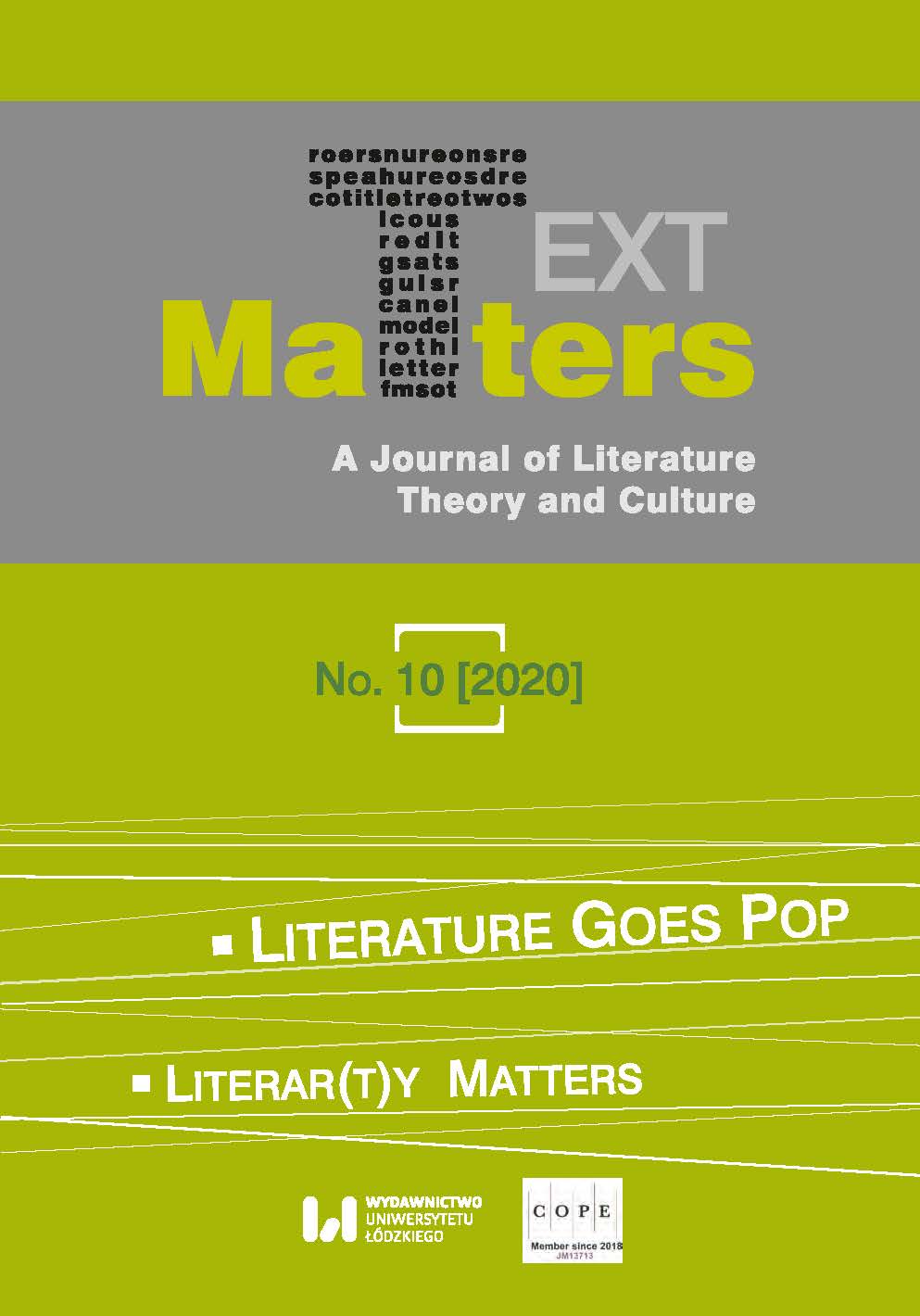Representing Absence: Contemporary Ekphrasis in “Apesh-t”
Representing Absence: Contemporary Ekphrasis in “Apesh-t”
Author(s): Agata G. HandleySubject(s): Media studies, Studies of Literature
Published by: Wydawnictwo Uniwersytetu Łódzkiego
Keywords: Beyoncé; Jay-Z; ekphrasis; music video
Summary/Abstract: Traditionally, ekphrasis has been defined as the description and analysis of works of art in poetry, and so it has been understood as the verbalization of visual images (Sager Eidt). The article examines the concept in the light of contemporary definitions that include non-verbal media as targets (Cariboni Killander, Lutas and Strukelj; Sager Eidt; Bruhn; Pethö) in order to analyze its applicability to music videos. It concentrates in particular on “Apesh-t,” a video for a track by Beyoncé and Jay-Z from the album Everything Is Love (2018). The video is filmed in different interiors of the Louvre, where the singers appear, together with an ensemble of dancers, in front of selected artworks. The discussion focuses on an analysis of a single shot which presents an ekphrastic re-configuration of one particular work of European art, Jacques-Louis David’s Portrait of Madame Récamier (1800). The author argues that the use of ekphrasis in the video—through elaboration (close-ups and editing) and repurposing of the source material (painting)—plays an important role in the construction of the theme of “absence”: invoking not only what is represented, but what is not represented in David’s painting. It also foregrounds the potential of ekphrasis as a tool of political and cultural resistance, in the way it intervenes in the representation of the “other” in art and in the museum space.
Journal: Text Matters: A Journal of Literature, Theory and Culture
- Issue Year: 2020
- Issue No: 10
- Page Range: 118-134
- Page Count: 17
- Language: English

